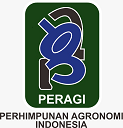Genomic Mapping, Molecular Marker and Marker Assisted Selection in Rice: A Review
Abstract
Increased agricultural output is necessary to feed a growing world population, yet crop yield growth rates are currently slowing down. Therefore, qualities related to yield, stability, and sustainability should take center stage in plant breeding initiatives. Durable disease resistance, abiotic stress tolerance, and effective nutrition and water usage are a few of these characteristics. On several rice chromosomes, various resistance genes have been discovered, mapped, and tightly connected DNA markers have been created. The following qualities were chosen as potential molecular marker candidates: fragrance, disease resistance to bacterial, blast, and sheath blights, grain extension while cooking, chalkiness propensity, gelatinization temperature, minor aroma components, and seedling vigor/early establishment. With the help of developments in genetics and genomics, it is now feasible to go into the history of rice domestication and identify the precise genetic processes that were influenced by human selection. Agronomic main effect quantitative trait loci (QTLs) may contribute cumulatively to genetic variation, with hybrids showing stronger effects and comparatively fewer contributions from epistatic effects.
Keywords
Full Text:
PDFReferences
Abdelkhalik, A. F., Shishido, R., Nomura, K., & Ikehashi, H. (2005). QTL-based analysis of heterosis for grain shape traits and seedling characteristics in an indica-japonica hybrid in rice (Oryza sativa L.). Breeding Science, 55(1), 41–48. https://doi.org/10.1270/jsbbs.55.41
Ahn, S., & Tanksley, S. D. (1993). Comparative linkage maps of the rice and maize genomes. Proceedings of the National Academy of Sciences of the United States of America, 90(17), 7980–7984. https://doi.org/10.1073/pnas.90.17.7980
Akagi, H., Yokozeki, Y., Inagaki, A., & Fujimura, T. (1996). Microsatellite DNA markers for rice chromosomes. Theoretical and Applied Genetics, 93(7), 1071–1077. https://doi.org/10.1007/BF00230127
Ashikari, M., Sakakibara, H., Lin, S., Yamamoto, T., Takashi, T., Nishimura, A., Angeles, E. R., Qian, Q., Kitano, H., & Matsuoka, M. (2005). Plant science: Cytokinin oxidase regulates rice grain production. Science, 309(5735), 741–745. https://doi.org/10.1126/science.1113373
Botstein, D., White, R. L., Skolnick, M., & Davis, R. W. (1980). Construction of a genetic linkage map in man using restriction fragment length polymorphisms. American Journal of Human Genetics, 32(3), 314–331.
Chang, T. T. (1976). The origin, evolution, cultivation, dissemination, and diversification of Asian and African rices. Euphytica, 25(1), 425–441. https://doi.org/10.1007/BF00041576
Chen, X., Temnykh, S., Xu, Y., Cho, Y. G., & McCouch, S. R. (1997). Development of a microsatellite framework map providing genome-wide coverage in rice (Oryza sativa L.). Theoretical and Applied Genetics, 95(4), 553–567. https://doi.org/10.1007/s001220050596
Chu, Z., Yuan, M., Yao, J., Ge, X., Yuan, B., Xu, C., Li, X., Fu, B., Li, Z., Bennetzen, J. L., Zhang, Q., & Wang, S. (2006). Promoter mutations of an essential gene for pollen development result in disease resistance in rice. Genes and Development, 20(10), 1250–1255. https://doi.org/10.1101/gad.1416306
Dai, L. Y., Liu, X. L., Xiao, Y. H., & Wang, G. L. (2007). Recent advances in cloning and characterization of disease resistance genes in rice. Journal of Integrative Plant Biology, 49(1), 112–119. https://doi.org/10.1111/j.1744-7909.2006.00413.x
Dong, N. V., Subudhi, P. K., Luong, P. N., Quang, V. D., Quy, T. D., Zheng, H. G., Wang, B., & Nguyen, H. T. (2000). Molecular mapping of a rice gene conditioning thermosensitive genic male sterility using AFLP, RFLP and SSR techniques. Theoretical and Applied Genetics, 100(5), 727–734. https://doi.org/10.1007/s001220051345
Foote, T., Roberts, M., Kurata, N., Sasaki, T., & Moore, G. (1997). Detailed comparative mapping of cereal chromosome regions corresponding to the Ph1 locus in wheat. Genetics, 147(2), 801–807. https://doi.org/10.1093/genetics/147.2.801
Gale, M. D., & Devos, K. M. (1998). Comparative genetics in the grasses. Proceedings of the National Academy of Sciences of the United States of America, 95(5), 1971–1974. https://doi.org/10.1073/pnas.95.5.1971
Gill, K. S., Gill, B. S., Endo, T. R., & Taylor, T. (1996). Identification and high-density mapping of gene-rich regions in chromosome group 1 of wheat. Genetics, 144(4), 1883–1891. https://doi.org/10.1093/genetics/144.4.1883
Grant, V., & Oka, H. I. (1988). Origin of Cultivated Rice. In Taxon (Vol. 37, Issue 4). https://doi.org/10.2307/1222108
Gu, K., Yang, B., Tian, D., Wu, L., Wang, D., Sreekala, C., Yang, F., Chu, Z., Wang, G. L., White, F. F., & Yin, Z. (2005). R gene expression induced by a type-III effector triggers disease resistance in rice. Nature, 435(7045), 1122–1125. https://doi.org/10.1038/nature03630
Harushima, Y., Yano, M., Shomura, A., Sato, M., Shimano, T., Kuboki, Y., Yamamoto, T., Lin, S. Y., Antonio, B. A., Parco, A., Kajiya, H., Huang, N., Yamamoto, K., Nagamura, Y., Kurata, N., Khush, G. S., & Sasaki, T. (1998). A high-density rice genetic linkage map with 2275 markers using a single F2 population. Genetics, 148(1), 479–494. https://doi.org/10.1093/genetics/148.1.479
Hua, J., Xing, Y., Wu, W., Xu, C., Sun, X., Yu, S., & Zhang, Q. (2003). Single-locus heterotic effects and dominance by dominance interactions can adequately explain the genetic basis of heterosis in an elite rice hybrid. Proceedings of the National Academy of Sciences of the United States of America, 100(5), 2574–2579. https://doi.org/10.1073/pnas.0437907100
Ikehashi, H., & Araki, H. (2008). Genetics of 1 Sterility in Remote Crosses of Rice. Rice Genetics, 119–130. https://doi.org/10.1142/9789812814265_0011
Ishimaru, K., Kashiwagi, T., Hirotsu, N., & Madoka, Y. (2005). Identification and physiological analyses of a locus for rice yield potential across the genetic background. Journal of Experimental Botany, 56(420), 2745–2753. https://doi.org/10.1093/jxb/eri267
Iyer, A. S., & McCouch, S. R. (2004). The rice bacterial blight resistance gene xa5 encodes a novel form of disease resistance. Molecular Plant-Microbe Interactions, 17(12), 1348–1354. https://doi.org/10.1094/MPMI.2004.17.12.1348
Kanbar, A., Janamatti, M., Sudheer, E., Vinod, M. S., & Shashidhar, H. E. (2006). Mapping QTLs underlying seedling vigour traits in rice (Oryza sativa L.). Current Science, 90(1), 24–26.
Kartel, N., Makeeva, E., & Mezenko, A. (1990). Genetika. Entsiklopedicheskii slovar’ (Genetics. Encyclopaedic Dictionary). In Minsk: Tekhnologiya.
Khush, G. S. (2005). What it will take to Feed 5.0 Billion Rice consumers in 2030. Plant Molecular Biology, 59(1), 1–6. https://doi.org/10.1007/s11103-005-2159-5
Kurata, N., Moore, G., Nagamura, Y., Foote, T., Yano, M., Minobe, Y., & Gale, M. (1994). Conservation of genome structure between rice and wheat. Bio/Technology, 12(3), 276–278. https://doi.org/10.1038/nbt0394-276
Lang, N. T., Subudhi, P. K., Virmani, S. S., Brar, D. S., Khush, G. S., Zhikang, L., & Huang, N. (1999). Development of PCR-based markers for thermosensitive genetic male sterility gene tms3(t) in rice (Oryza sativa L.). Hereditas, 131(2), 121–127. https://doi.org/10.1111/j.1601-5223.1999.00121.x
Lee, S. J., Oh, C. S., Suh, J. P., McCouch, S. R., & Ahn, S. N. (2005). Identification of QTLs for domestication-related and agronomic traits in an Oryza sativa x O. rufipogon BC1F7 population. Plant Breeding, 124(3), 209–219. https://doi.org/10.1111/j.1439-0523.2005.01092.x
Li, C., Zhou, A., & Sang, T. (2006). Rice domestication by reducing shattering. Science, 311(5769), 1936–1939. https://doi.org/10.1126/science.1123604
Li, Z. K., Luo, L. J., Mei, H. W., Wang, D. L., Shu, Q. Y., Tabien, R., Zhong, D. B., Ying, C. S., Stansel, J. W., Khush, G. S., & Paterson, A. H. (2001). Overdominant epistatic loci are the primary genetic basis of inbreeding depression and heterosis in rice. I. Biomass and grain yield. Genetics, 158(4), 1737–1753. https://doi.org/10.1093/genetics/158.4.1737
Lopez, M. T., Toojinda, T., Vanavichit, A., & Tragoonrung, S. (2003). Microsatellite Markers Flanking the tms2 Gene Facilitated Tropical TGMS Rice Line Development. Crop Science, 43(6), 2267–2271. https://doi.org/10.2135/cropsci2003.2267
Luo, A., Qian, Q., Yin, H., Liu, X., Yin, C., Lan, Y., Tang, J., Tang, Z., Cao, S., Wang, X., Xia, K., Fu, X., Luo, D., & Chu, C. (2006). EUI1, encoding a putative cytochrome P450 monooxygenase, regulates internode elongation by modulating gibberellin responses in rice. Plant and Cell Physiology, 47(2), 181–191. https://doi.org/10.1093/pcp/pci233
Ma, H., Zhang, S., Ji, L., Zhu, H., Yang, S., Fang, X., & Yang, R. (2006). Fine mapping and in silico isolation of the EUI1 gene controlling upper internode elongation in rice. Plant Molecular Biology, 60(1), 87–94. https://doi.org/10.1007/s11103-005-2762-5
Mackill, D. J. (2007). Molecular markers and marker-assisted selection in rice. In R.K. Varshney & R. Tuberosa (Eds.), Genomics-Assisted Crop Improvement (Vol. 2, pp. 147–168). https://doi.org/10.1007/978-1-4020-6297-1_7
McCouch, S., Kovach, M., Sweeney, M., & Semon, M. (2010). Gene flow and genetic isolation in crop evolution. In G. P (Ed.), Proceedings of the Harlan II Symposium: Biodiversity in Agriculture: Domestication, Evolution, & Sustainability. Cambridge University Press, UC Davis, CA.
McCouch, S. R., Kochert, G., Yu, Z. H., Wang, Z. Y., Khush, G. S., Coffman, W. R., & Tanksley, S. D. (1988). Molecular mapping of rice chromosomes. Theoretical and Applied Genetics, 76(6), 815–829. https://doi.org/10.1007/BF00273666
McCouch, Susan R., Chen, X., Panaud, O., Temnykh, S., Xu, Y., Cho, Y. G., Huang, N., Ishii, T., & Blair, M. (1997). Microsatellite marker development, mapping and applications in rice genetics and breeding. Plant Molecular Biology, 35(1–2), 89–99. https://doi.org/10.1007/978-94-011-5794-0_9
McCouch, Susan R., Teytelman, L., Xu, Y., Lobos, K. B., Clare, K., Walton, M., Fu, B., Maghirang, R., Li, Z., Xing, Y., Zhang, Q., Kono, I., Yano, M., Fjellstrom, R., DeClerck, G., Schneider, D., Cartinhour, S., Ware, D., & Stein, L. (2002). Development and mapping of 2240 new SSR markers for rice (Oryza sativa L.). DNA Research, 9(6), 199–207. https://doi.org/10.1093/dnares/9.6.199
Mei, H. W., Li, Z. K., Shu, Q. Y., Guo, L. B., Wang, Y. P., Yu, X. Q., Ying, C. S., & Luo, L. J. (2005). Gene actions of QTLs affecting several agronomic traits resolved in a recombinant inbred rice population and two backcross populations. Theoretical and Applied Genetics, 110(4), 649–659. https://doi.org/10.1007/s00122-004-1890-7
Moncada, P., Martínez, C. P., Borrero, J., Chatel, M., Gauch, J., Guimaraes, E., Tohme, J., & McCouch, S. R. (2001). Quantitative trait loci for yield and yield components in an Oryza sativa × Oryza rufipogon BC2F2 population evaluated in an upland environment. Theoretical and Applied Genetics, 102(1), 41–52. https://doi.org/10.1007/s001220051616
Moore, G., Foote, T., Helentjaris, T., Devos, K., Kurata, N., & Gale, M. (1995). Was there a single ancestral cereal chromosome? In Trends in Genetics (Vol. 11, Issue 3). https://doi.org/10.1016/S0168-9525(00)89005-8
Morishima, H. (1984). Species relationships and the search for ancestors (T. S & T. N (eds.)). Elsevier, Amsterdam.
OECD. (1997). Organization for Economic Co-operation and Development. Consensus document on the biology of solanum tubersoum subsp. Tuberosum (potato). In Http://Www.Oecd.Org/Science/Biotrack/46815598.Pdf (Issue 8). http://www.oecd.org/science/biotrack/46815598.pdf
Panaud, O., Chen, X., & McCouch, S. R. (1996). Development of microsatellite markers and characterization of simple sequence length polymorphism (SSLP) in rice (Oryza sativa L.). Molecular and General Genetics, 252(5), 597–607. https://doi.org/10.1007/s004380050267
Panaud, O., Chen Xiuli, & McCouch, S. R. (1995). Frequency of microsatellite sequences in rice (Oryza sativa L.). Genome, 38(6), 1170–1176. https://doi.org/10.1139/g95-155
Peng, S., Laza, R. C., Visperas, R. M., Sanico, A. L., Cassman, K. G., & Khush, G. S. (2000). Grain yield of rice cultivars and lines developed in the Philippines since 1966. Crop Science, 40(2), 307–314. https://doi.org/10.2135/cropsci2000.402307x
Peng, Shaobing, Laza, R. C., Visperas, R. M., Khush, G. S., Virk,
P., & Zhu, D. (2004). Rice: Progress in Breaking the Yield Ceiling. Proceedings of the 4th International Crop Science Congress, Chandler 1982, 1–11. http://www.cropscience.org.au/icsc2004/pdf/982_pengs.pdf
Porteres, R. (1956). Taxonomic agrobotanique der riz cultives O. sativa Linne. et O. glaberrima Steudelo. J. Agri. Trop. Bot. App., 3, 341–384.
Qiu, S. Q., Liu, K., Jiang, J. X., Song, X., Xu, C. G., Li, X. H., & Zhang, Q. (2005). Delimitation of the rice wide compatibility gene S5n to a 40-kb DNA fragment. Theoretical and Applied Genetics, 111(6), 1080–1086. https://doi.org/10.1007/s00122-005-0033-0
Sasaki, A., Ashikari, M., Ueguchi-Tanaka, M., Itoh, H., Nishimura, A., Swapan, D., Ishiyama, K., Saito, T., Kobayashi, M., Khush, G. S., Kitano, H., & Matsuoka, M. (2002). A mutant gibberellin-synthesis gene in rice: New insight into the rice variant that helped to avert famine over thirty years ago. Nature, 416(6882), 701–702. https://doi.org/10.1038/416701a
Second, G. (1982). Origin of the genic diversity of cultivated rice (Oryza spp.): Study of the polymorphism scored at 40 isozyme loci. The Japanese Journal of Genetics, 57(1), 25–57. https://doi.org/10.1266/jjg.57.25
Septiningsih, E. M., Trijatmiko, K. R., Moeljopawiro, S., & McCouch, S. R. (2003). Identification of quantitative trait loci for grain quality in an advanced backcross population derived from the Oryza sativa variety IR64 and the wild relative O. rufipogon. Theoretical and Applied Genetics, 107(8), 1433–1441. https://doi.org/10.1007/s00122-003-1376-z
Song, W. Y., Wang, G. L., Chen, L. L., Kim, H. S., Pi, L. Y., Holsten, T., Gardner, J., Wang, B., Zhai, W. X., Zhu, L. H., Fauquet, C., & Ronald, P. (1995). A receptor kinase-like protein encoded by the rice disease resistance gene, Xa21. Science, 270(5243), 1804. https://doi.org/10.1126/science.270.5243.1804
Sun, X., Cao, Y., Yang, Z., Xu, C., Li, X., Wang, S., & Zhang, Q. (2004). Xa26, a gene conferring resistance to Xanthomonas oryzae pv. oryzae in rice, encodes an LRR receptor kinase-like protein. Plant Journal, 37(4), 517–527. https://doi.org/10.1046/j.1365-313X.2003.01976.x
Takai, T., Fukuta, Y., Shiraiwa, T., & Horie, T. (2005). Time-related mapping of quantitative trait loci controlling grain-filling in rice (Oryza sativa L.). Journal of Experimental Botany, 56(418), 2107–2118. https://doi.org/10.1093/jxb/eri209
Tanksley, S. D., & Nelson, J. C. (1996). Advanced backcross QTL analysis: A method for the simultaneous discovery and transfer of valuable QTLs from unadapted germplasm into elite breeding lines. Theoretical and Applied Genetics, 92(2), 191–203. https://doi.org/10.1007/BF00223376
Tian, F., De, J. L., Fu, Q., Zuo, F. Z., Yong, C. F., Xiang, K. W., & Chuan, Q. S. (2006). Construction of introgression lines carrying wild rice (Oryza rufipogon Griff.) segments in cultivated rice (Oryza sativa L.) background and characterization of introgressed segments associated with yield-related traits. Theoretical and Applied Genetics, 112(3), 570–580. https://doi.org/10.1007/s00122-005-0165-2
Vaughan, D. A. (1994). The wild relatives of rice. International Rice Research Institute.
Vaughan, D. A., Morishima, H., & Kadowaki, K. (2003). Diversity in the Oryza genus. Current Opinion in Plant Biology, 6(2), 139–146. https://doi.org/10.1016/S1369-5266(03)00009-8
Viraktamath, S. and. (2001). Rice. In Chopra VL (Ed.), Breeding Field Crops (pp. 1–85). Oxford and IBH Publishing Co. Pvt. Ltd.
Wan, J. M., Jiang, L., Tang, J. Y., Wang, C. M., Hou, M. Y., Jing, W., & Zhang, L. X. (2006). Genetic dissection of the seed dormancy trait in cultivated rice (Oryza sativa L.). Plant Science, 170(4), 786–792. https://doi.org/10.1016/j.plantsci.2005.11.011
Wang, C., Zhang, P., Ma, Z., Zhang, M., Sun, G., & Ling, D. (2004). Development of a genetic marker linked to a new thermo-sensitive male sterile gene in rice (Oryza sativa L.). Euphytica, 140(3), 217–222. https://doi.org/10.1007/s10681-004-3360-3
Wang, G. W., He, Y. Q., Xu, C. G., & Zhang, Q. (2005). Identification and confirmation of three neutral alleles conferring wide compatibility in inter-subspecific hybrids of rice (Oryza sativa L.) using near-isogenic lines. Theoretical and Applied Genetics, 111(4), 702–710. https://doi.org/10.1007/s00122-005-2055-z
Wang, Z., Zou, Y., Li, X., Zhang, Q., Chen, L., Wu, H., Su, D., Chen, Y., Guo, J., Luo, D., Long, Y., Zhong, Y., & Liu, Y. G. (2006). Cytoplasmic male sterility of rice with Boro II cytoplasm is caused by a cytotoxic peptide and is restored by two related PPR motif genes via distinct modes of mRNA silencing. Plant Cell, 18(3), 676–687. https://doi.org/10.1105/tpc.105.038240
Wu, K. S., & Tanksley, S. D. (1993). Abundance, polymorphism and genetic mapping of microsatellites in rice. MGG Molecular & General Genetics, 241(1–2), 225–235. https://doi.org/10.1007/BF00280220
Xu, K., Xu, X., Fukao, T., Canlas, P., Maghirang-Rodriguez, R., Heuer, S., Ismail, A. M., Bailey-Serres, J., Ronald, P. C., & Mackill, D. J. (2006). Sub1A is an ethylene-response-factor-like gene that confers submergence tolerance to rice. Nature, 442(7103), 705–708. https://doi.org/10.1038/nature04920
Yamaguchi, T., Lee, D. Y., Miyao, A., Hirochika, H., An, G., & Hirano, H. Y. (2006). Functional diversification of the two C-class MADS box genes OSMADS3 and OSMADS58 in Oryza sativa. Plant Cell, 18(1), 15–28. https://doi.org/10.1105/tpc.105.037200
Yao, F. Y., Xu, C. G., Yu, S. B., Li, J. X., Gao, Y. J., Li, X. H., & Zhang, Q. (1997). Mapping and genetic analysis of two fertility restorer loci in the wild-abortive cytoplasmic male sterility system of rice (Oryza sativa L.). Euphytica, 98(3), 183–187. https://doi.org/10.1023/A:1003165116059
Yoshimura, S., Yamanouchi, U., Katayose, Y., Toki, S., Wang, Z. X., Kono, I., Kurata, N., Yano, M., Iwata, N., & Sasaki, T. (1998). Expression of Xa1, a bacterial blight-resistance gene in rice, is induced by bacterial inpculation. Proceedings of the National Academy of Sciences of the United States of America, 95(4), 1663–1668. https://doi.org/10.1073/pnas.95.4.1663
You, A., Lu, X., Jin, H., Ren, X., Liu, K., Yang, G., Yang, H., Zhu, L., & He, G. (2006). Identification of quantitative trait loci across recombinant inbred lines and testcross populations for traits of agronomic importance in rice. Genetics, 172(2), 1287–1300. https://doi.org/10.1534/genetics.105.047209
Zhang, G., Bharaj, T. S., Lu, Y., Virmani, S. S., & Huang, N. (1997). Mapping of the Rf-3 nuclear fertility-restoring gene for WA cytoplasmic male sterility in rice using RAPD and RFLP markers. Theoretical and Applied Genetics, 94(1), 27–33. https://doi.org/10.1007/s001220050377
Zhu, Y., Nomura, T., Xu, Y., Zhang, Y., Peng, Y., Mao, B., Hanada, A., Zhou, H., Wang, R., Li, P., Zhu, X., Mander, L. N., Kamiya, Y., Yamaguchi, S., & He, Z. (2006). ELONGATED UPPERMOST INTERNODE encodes a cytochrome P450 monooxygenase that epoxidizes gibberellins in a novel deactivation reaction in rice. Plant Cell, 18(2), 442–456. https://doi.org/10.1105/tpc.105.038455
Refbacks
- There are currently no refbacks.



























